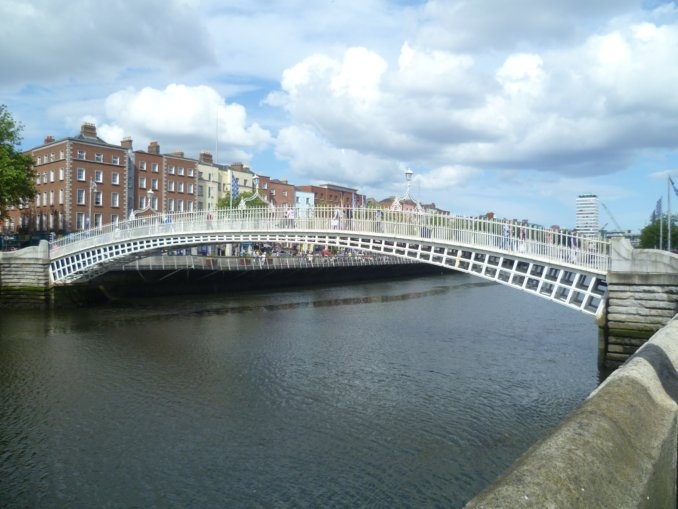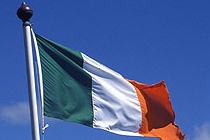Dublin - Baile Átha Cliath

Dublin (Irish: Baile Átha Cliath) is the captal city of Ireland (Irish: Éire). The name Dublin derives from the Irish name Dubh Linn (black pool). The city grew from a Viking settlement on the River Liffey. Due to its compact size Dublin is easy to explore. It is steeped in history and has a host of architectural sites to visit as well as green spaces. Dublin also has much to offer for those looking for art, culture and good food. Below are just a few of the many places in Dublin that can be visited.
Viking and Medieval Museum
In looking at the early rise of Dublin we recommend that you visit the Dublinia Viking and Medieval Museum. The is an excellent introduction with friendly informative staff and high quality exhibitions. Dublinia is located at St Michaels Hill, Christchurch, Dublin 8 (Tel: 01679 4611). The museum is connected to Christ Church Cathedral by a medieval footbridge. There is an entry fee to the Museum and a joint ticket to the Cathedral can also be purchased.
Christ Church Cathedral
This is the site of an old Viking church founded by Sitriuc, the Norse King of Dublin and Dunan the first bishop of Dublin around 1030. For full information on the site and visitor information contact visit Christ Church Cathedral's website.
National Museum of Ireland (Ard-Mhúsaem na hÉireann)
Entry to the Museum is free and it is located next to Leinster House (Government Buildings) in Kildare Street, Dublin 2. It is an essential place to visit and has a large collection relating to Irish material heritage, culture and natural history. The museum holds over two million archaeological artefacts. To find out the latest information on exhibitions and exhibits visit the Nation Museum's website.
Trinity College Library Dublin (Coláiste na Tríonóide, Baile Átha Cliath)
This is the library of Trinity College. It is home to the Book of Kells/Leabhar Cheanannais made by Celtic Monks around 800AD. The book's name is taken from the Abbey of Kells in County Meath where it was previously located. The superb illustrations and design of the book incorporates Celtic designs into Christian iconography.
Dublin Castle (Caisleán Bhaile Átha Cliath)
This was the seat of British rule in Ireland until it was handed over to the leader of the new Provisional Government of the Irish Free State, Michael Collins, in 1922. The Record Tower on the site is from the original thirteenth century castle and the building is off Dame Street. More information can be found on the Dublin Castle website.
Drimnagh Castle (Caisleán Dhroimeanaigh)
Drimnagh Castle/Caisleán Dhroimeanaigh is a Norman Castle surrounded by a moat. It was continually inhabited until 1954 and in the 1980's a programme of restoration began which concluded in 1996. Within the castle is a fifteenth century great hall and sixteenth century attached tower along with later buildings. Dublin Castle is open to the public and situated at in the Long Mile Road, Drimnagh, Dublin 12.
Rathfarnham Castle (Caisleán Rath Fearnáin)
This is the site of a former Anglo-Norman castle and the present structure dates from the late sixteenth century. The castle is now owned by the state and undergoing a conservation programme but remains open to the public. It is located near the Rathfarnham By -pass between Rathfarnham Road and Grange Road. It is in the southside of Dublin. More information can be found on the Rathfarnham Castle website.
Kilmainham Gaol (Irish: Príosún Chill Mhaighneann)
This is a former prison in Kilmainham, Dublin, Ireland. It is now a museum run by the Office of Public Works, an agency of the Government of Ireland. Many Irish revolutionaries, including the leaders of the 1916 Easter Rising, were imprisoned and executed in the prison under the orders of the British Government. More information can be seen on the Kilmainham Gaol website.
Links: Visit Dublin tourism website.
Celtic nation:
- Ireland
Itinerary:
- Ireland Leinster central
Place type:
- Village/Town/City





